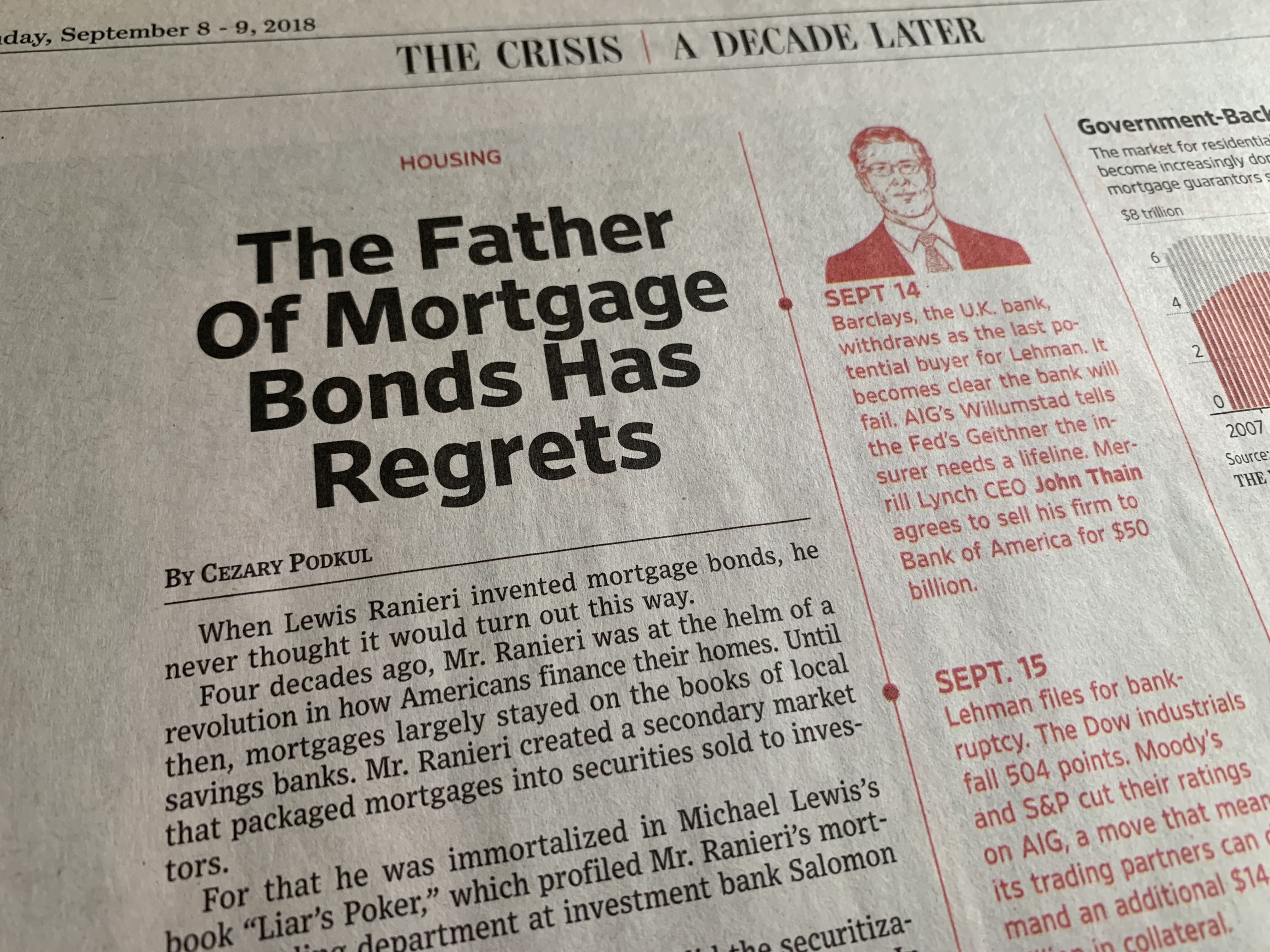
How many times have you heard business or finance executives express any remorse for their role in the 2008 financial crisis? If you can’t recall, that’s about the same answer that many of the characters involved in 2008 have given over the years when asked about their role in helping precipitate the crisis. Well, either that or je ne regrette rien.
Which is why I was surprised when I stopped by Lewis Ranieri’s office in May 2018 and heard him express regret for his role in the subprime home mortgage meltdown. “I’m the guy who played a central role in this home thing and I regret it because … it got abused beyond everybody’s imagination,” Ranieri told me. “I will never, ever, ever, ever live out that scar that I carry for what happened with something I created.”
Ranieri was referring to the mortgage-backed security – a financial innovation which he pioneered when he headed the mortgage-trading department at investment bank Salomon Brothers in the 1980s. The advent of mortgage-backed securities helped banks lend to more homeowners by packaging pools of mortgages into securities and selling them to investors instead of holding them on their books. That helped make credit more widely available and spurred a golden era of mortgage lending in the U.S.
But less than three decades later, mortgage backed-securities precipitated the 2008 financial crisis when they infamously turned out to be far-riskier than many investors had realized. The market froze up, banks suddenly found themselves holding billions of worthless securities, a crisis followed and the rest was history.
To be fair to Ranieri, he had warned the industry about the excesses before the mortgage bubble burst in 2008. At a Dec. 2006 speech at an event organized by federal financial regulators, Ranieri said that he’d like triple-A rated mortgage-backed securities to remain triple-A, but that wasn’t likely given the way the industry was going. The real risk of mortgage-backed securities was being obfuscated, he said at the time.
The obfuscation masked massive fraud. The mortgage-backed securities of the mid-2000s were often filled with so-called “liar loans” in which people misrepresented their incomes and got loans anyway. Poor disclosures and re-securitization of mortgage securities into other securities helped hide the risk, and ensured that the bondholders’ collateral would become worthless if home prices declined – exactly as Ranieri had predicted in his 2006 speech. But everyone involved – from the loan originators to the investment banks structuring the deals and the credit rating firms that rated the debt – looked the other way, as long as they weren’t caught holding the bag.
Mortgage fraud was also the reason I’d come by to talk with Ranieri. I had noticed that misrepresentation of income had shifted from the residential mortgage market into commercial mortgages, which finance malls, offices, hotels and the like. I was in the midst of reporting a page-one story on commercial mortgage fraud (which ran in August 2018) but when I heard Ranieri’s heartfelt reflection on the events of 2008 and his feelings about how his invention helped contribute to it, I thought it was worth its own news feature. It ran in The Wall Street Journal’s special ten-year anniversary edition in September 2018. You can read the full story here.